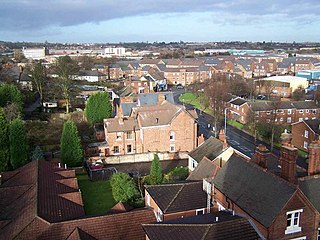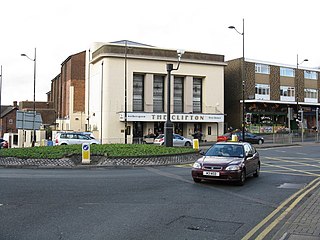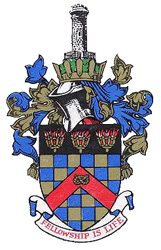
West Midlands is a metropolitan and ceremonial county in the larger West Midlands region of England. A landlocked county, it is bordered by Staffordshire to the north and west, Worcestershire to the south, and is almost surrounded by Warwickshire to the east. The largest settlement is the city of Birmingham.

Tipton is an industrial town in the metropolitan borough of Sandwell, in the county of the West Midlands, England. It had a population of 38,777 at the 2011 UK Census. It is located northwest of Birmingham and southeast of Wolverhampton. It is also contiguous with nearby towns of Darlaston, Dudley, Wednesbury and Bilston.

Sedgley is a town in the north of the Dudley district, in the county of the West Midlands, England.

Penn is an area divided between the City of Wolverhampton and South Staffordshire district. The population of the Wolverhampton Ward taken at the 2011 census was 12,718. Originally, it was a village in the historic county of Staffordshire.
The West Midlands region straddles the historic borders between the counties of Warwickshire, Staffordshire in the north, and Worcestershire in the south.

Coseley is a village in the Dudley district, in the county of the West Midlands, England. It is situated three miles north of Dudley itself, on the border with Wolverhampton and Sandwell. It falls within the Tipton and Wednesbury parliamentary constituency.

Blakenhall is a suburb and ward of Wolverhampton, England. The population of the ward, including Goldthorn Park, was around 12,600 at the 2021 census.

Bradley is a suburban village in the City of Wolverhampton, West Midlands County, England. It is located in the Bilston East ward.
Goldthorn Park is a suburb of Wolverhampton, West Midlands. It is situated 1½ miles south of the city centre within the Blakenhall ward. It mostly consists of private houses built from the 1930s onwards.

Ettingshall is an area of Wolverhampton, West Midlands, England. It lies within two wards of Wolverhampton City Council: Ettingshall North and Ettingshall South and Spring Vale. The population of Ettingshall taken at the 2011 census was 13,482.

The County Borough of Dudley was a local government district in the English Midlands from 1865 to 1974. Originally a municipal borough, it became a county borough in 1889, centred on the main town centre of Dudley, along with the suburbs of Netherton and Woodside. Although surrounded by Staffordshire, the borough was associated with Worcestershire for non-administrative purposes, forming an exclave of the county until 1966, when it was transferred to Staffordshire after an expansion of the borough boundaries. Following local government reorganization in 1974, Dudley took in the boroughs of Halesowen and Stourbridge to form the present-day Metropolitan Borough of Dudley, in the newly formed West Midlands county.
The Priory Estate is a housing estate in Dudley, West Midlands, England, which has largely been developed since 1929.

Tipton Green is the central area of Tipton, a town in the West Midlands of England. It was heavily developed for heavy industry and housing during the 19th century, as Tipton was one of the most significant towns during the Industrial Revolution. Tipton Green is one of three electoral wards covering Tipton for Sandwell Metropolitan Borough Council. The population of this Sandwell ward taken at the 2011 census was 12,834. It is represented by three Labour councillors.
Woodcross is a residential area of Wolverhampton, West Midlands, England. The area traditionally existed within the boundaries of Sedgley and later Coseley until 1966.
Parkfield High School was a secondary school located in Wolverhampton, West Midlands, England.

Coseley Urban District was a local government district in Staffordshire which was created in 1894.
Sedgley urban district was a local government district within Staffordshire, which was created in 1894 from the western half of the manor of Sedgley.

Wolverhampton is a city and metropolitan borough in the West Midlands, England, 13 miles (21 km) northwest of Birmingham. The population in 2021 was 263,700.

Beacon Hill in Sedgley, England, is one of the highest points in the West Midlands, at 237 metres (778 ft) above sea level.











